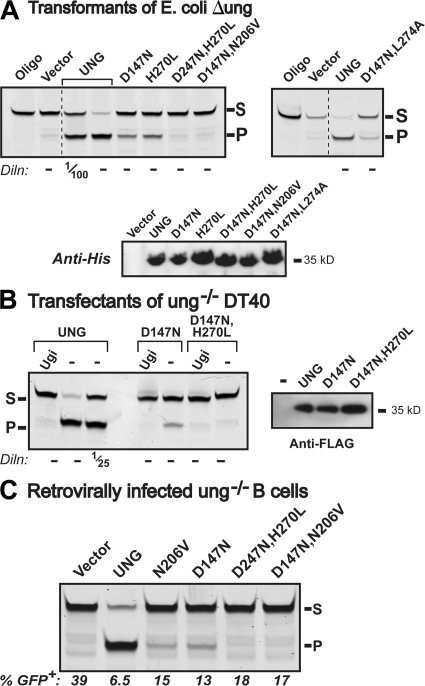Figure 3.
Mutant UNGs that support switching retain uracil-excision activity. (A) Assay for uracil-excision activity by recombinant UNGs produced in E. coli. 10 μg extracts of E. coli (Δung) transformants expressing His-tagged versions of the indicated mouse UNG variants were incubated with 0.5 pmol of FITC-labeled, U-containing single-stranded oligonucleotide substrate. After incubation with apyrimidinic endonuclease and subsequent PAGE, uracil excision is evident from conversion of the fluorescently labeled 42-mer substrate (S) into the 26-mer product (P). Undiluted extracts were used, except where indicated. A Western blot using an anti-histidine tag antiserum was used to control for expression levels. (B) Assay for uracil-excision activity in extracts of ung−/− DT40 cells transfectants expressing wild-type or mutant FLAG-tagged mouse UNGs. Samples (5 μg protein, or a dilution where specified) of whole-cell extracts were assayed for uracil-excision activity as described in A, but with the extracts preincubated with the UNG-specific inhibitor Ugi where indicated. (right) An anti-FLAG Western blot to control for expression levels. (C) Assay for uracil-excision activity in extracts of ung−/− mouse B cells that have been transduced with the indicated UNG-expressing retroviral vectors. Extracts (which were assayed undiluted) were prepared 4 d after retroviral transduction, and the proportion of retrovirally infected cells (as judged by GFP fluorescence) in each population is indicated below each lane. Endogenous SMUG1 activity was neutralized by preincubating the extracts with anti-SMUG1 PSM1 antibody (11).

